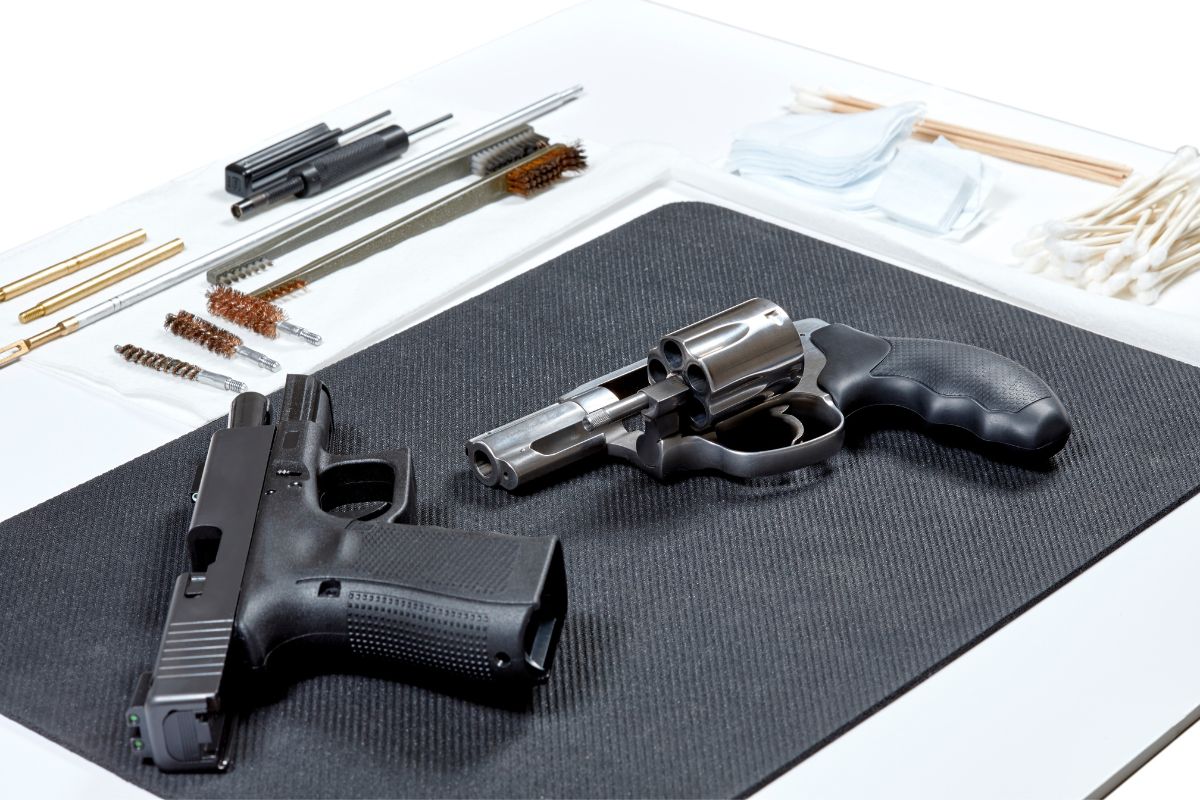What is a Transfer of Firearm Without Authority Charge?
Transfer of firearm without authority is covered under s. 101 of the Criminal Code found in Part III, which covers “Firearms and Other Weapons”.
A transfer of firearm without authority arises when a person is found to have transferred a firearm, prohibited or restricted weapon, device or ammunition, to another without authority to do so. The charge occurs when the individual does not have authority for the transfer under the Firearms Act or any other parliamentary act or regulation.
Transfer of firearm without authority is a hybrid offence with a Crown election on the type of proceedings. This means that depending on the circumstances of your case, the Crown can elect to proceed either by indictment or summarily. If the Crown elects to proceed by indictment, there is a defence election of court under s. 536(2) of the Criminal Code, which means the accused can choose whether they would like to be tried by a judge alone or through a jury.
Examples
Some examples of a transfer of firearm without authority charge may include the following:
- The accused was caught in the act of transferring a prohibited firearm while not having the authority to do so;
- The accused transferred prohibited devices to their customers, without authority to do so;
- The accused transferred firearms to an unlicensed person; and
- The accused without authority transferred a firearm to another unlicensed individual.
Defences
The defences available to a transfer of firearm without authority charge are dependent on the facts of your case.
However, some defences to a transfer of firearm without authority charge may include:
- The accused was wrongfully identified as the person who transferred a firearm without authority;
- The accused was under duress when they transferred a firearm without authority;
- The accused was in fact acting in authority; and
- The accused was arrested unlawfully.
Punishment
A transfer of firearm without authority charge is a hybrid offence, which means that the maximum punishment is as follows:
- Imprisonment for a term not exceeding 5 years.
Punishment for transfer of firearm without authority charge depends on whether the Crown elects to pursue the charge by indictment or summarily. As a hybrid offence, there are no mandatory minimum penalties for this offence. If the Crown proceeds by summary prosecution, the maximum punishment would be six months imprisonment, a $5000 fine or both as noted under s. 787(1) of the Criminal Code. The maximum is no more than a term of imprisonment of five years, if prosecuted by indictment.
A transfer of firearm without authority may also result in severe consequences for current and future employment opportunities, immigration status and more.
Overview of the Offence
According to s. 101 of the Criminal Code:
Transfer without authority
101 (1) Every person commits an offence who transfers a prohibited firearm, a restricted firearm, a non-restricted firearm, a prohibited weapon, a restricted weapon, a prohibited device, any ammunition or any prohibited ammunition to any person otherwise than under the authority of the Firearms Act or any other Act of Parliament or any regulations made under an Act of Parliament.
Punishment
(2) Every person who commits an offence under subsection (1)
(a) is guilty of an indictable offence and liable to imprisonment for a term not exceeding five years; or
(b) is guilty of an offence punishable on summary conviction.
The Guilty Act (Actus Reus)
The actus reus for a transfer of firearm without authority under s. 101 is established by proof beyond a reasonable doubt, of the following:
Transfer without authority 101(1)
- The accused at a specified date and time, in the correct jurisdiction, transferred a prohibited, restricted or non-restricted firearm, weapon or device and any ammunition to any person without legislative authority.
The actus reus refers to the act or omission itself that constitutes the physical elements of a crime. Thus, the physical aspect of a transfer of a firearm without authority would be constituted by any physical act or omission of a transfer of a firearm without authority act as defined in s. 101 of the Criminal Code. One example of actus reus would therefore be if an individual gives ammunition to another individual who is unlicensed.
The Guilty Mind (Mens Rea)
The mens rea for a transfer of firearm without authority charge under s. 101(1) includes proving beyond a reasonable doubt, that:
- The accused knowingly transferred a firearm or other device or ammunition, prohibited or not, and;
- The accused had no lawful authority or excuse for transferring the firearm or device.
Mens rea is defined as the knowledge or intention of committing the crime. Thus, knowing that one is unlawfully and/or without authority transferring a firearm, for example, to another, potentially unlicensed person, consists of the mens rea of the charge.
In R v Hault, the court examines directly what the necessary intent, or mens rea, is, under s. 101, stating that the court must find beyond a reasonable doubt that the individual accused was aware that they committed the act, whether intentionally, with knowledge, recklessly, or with wilful blindness. In this case, the court found that the Crown had to prove that the accused had indeed intended to sell ammunition to an individual, whether or not he had a firearms license, or was being wilfully reckless in doing so.
Defences
How to Beat a Transfer of Firearm Without Authority Charge
As in every other case and all other charges, possible defences will depend on the facts and circumstances of your case. These as well as the evidence available will dictate the strength of each available defence. However, listed below are some common defences that may be helpful in fighting a transfer of firearm without authority charge.
Factual Innocence
Factual innocence is one possible defence against a transfer of firearms without authority charge. If you can prove, using the facts and the evidence of your case, that you were not engaged in an act under s. 101, or that the evidence cannot place you as the perpetrator of a transfer of firearm without authority act, then you may be able to defend yourself by stating that you were factually innocent. If you can prove that you did not commit the crime or that you did in fact have the authority to transfer a firearm, and that they transferred it to an individual who is licensed, then they may be able to use this fact as a defence.
Duress
Another possible defence to a piratical acts charge is duress. Duress is proven when the five criteria listed below are met.
- That there was a threat of present/future death or physical harm,
- That the accused reasonably believes that the threat would be carried out,
- That the accused had no safe way to avoid the harm,
- That it is because of the threat, that the accused did what they did, and
- That the harm that the accused caused was not disproportionate to the harm that was threatened against the accused.
All five of the elements of duress must be met for the defence of duress to apply.
Any applicable Charter defences
The Charter sets out your rights and freedoms before and after your arrest. If the police fail to abide by these rights deliberately or inadvertently, it could aid in your defence. If any of your Charter rights have been violated before or after your arrest, you may be able to have some or all of the evidence that the Crown is relying on to secure a conviction excluded under s. 24(2) of the Charter.
Punishments
The Criminal Code provides for a possible maximum term of imprisonment not exceeding 5 years for those who are convicted of a transfer of firearm without authority charge.
A charge under s. 101 allows the accused to be given an appearance notice without arrest under s. 497 of the Criminal Code or a summons. If the accused is arrested, they can also be released by the arresting officer on an undertaking under s. 498 or 499 of the Criminal Code or by a justice under s 515 of the Criminal Code.
Moreover, a prohibition order may ensue, whereby the accused would be prohibited under s. 101 from possessing any firearm, prohibited devices and/or ammunition.
As a hybrid offence with a maximum penalty of five years of imprisonment, this offence is categorized as a secondary designated offence under s. 487.04(a) of the Criminal Code. With these types of offences, a DNA order can be authorized only where the Crown applies for it.








